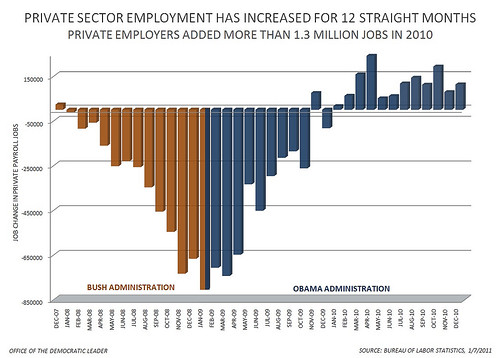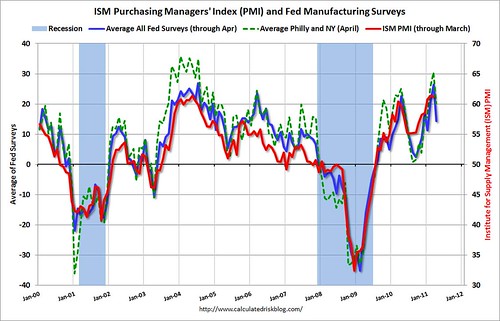Sometimes you can just see glimmers of something through the DC brain fog, other times it becomes so clear that you can't ignore it. The current DC brain-fog motto is, "if it doesn't work, do it more." Today's GDP-growth report shows that austerity isn't working, so the geniuses in DC want to do it more. And they say, "government just gets in the way of business" so we send our businesses out on their own to compete with governments, and the resulting trade deficits eat our jobs.
Cutbacks Cut Growth
How long ago was it that DC was all about cutting taxes for the rich even more? And how many minutes after that was DC all about cutting budgets - "austerity" - because of the resulting budget deficits? So instead of the jobs that will fix the deficits the government gives us cutbacks -- cutbacks in taxes on the rich, cutbacks in construction projects, cutbacks in teachers and police and other government functions, cutbacks in the things We, the People do for each other.
We watch as England, Greece, Ireland and other countries try cutbacks - austerity - to get out of slow growth and their growth gets slower as a result. The US tries it, too, and our growth gets slower, too.
The first quarter growth figures are out: 1.8% for the first three months of the year,
Total output grew at an annual pace of 1.8 percent from January through March, the Commerce Department said Thursday, after having expanded at an annual rate of 3.1 percent in the fourth quarter of 2010.
But the DC fog machine blames the weather, not austerity.
Higher commodity prices and winter blizzards that shuttered businesses and delayed construction were among the main causes of the slowdown.
Our growth slows because of austerity. So they blame the weather and insist on more austerity. Because austerity "gets government out of the way" of the wealthy few and their accumulation of the rest.
Trade Deficit
As the economy recovered a bit and people started to buy a few more things , the things came from elsewhere, and the money and jobs just left the economy. Without government policies to deal with it, our trade deficit will continue to get even worse, costing us even more jobs and growth and draining even more money out of the country.
Germany runs a trade surplus, so German unemployment is at its lowest level in 19 years. Headline: German Unemployment Declines to 19-Year Low as Export Boom Drives Demand,
German companies are hiring as they increase production to meet booming export orders, fueling domestic demand. ... German factory orders and industrial production rose more than economists predicted in February. ... More than a third of Germany’s medium-sized companies plan to take on staff in the second quarter ...
Germany also pays workers more than we do, gives them lots and lots of vacation time, health care, pensions, rights on the job -- all the things that our leaders say hurt our businesses.
Our leadership is making every effort to return to the old economy that caused the crisis. This is because those who benefited from that economy are still in control of the system, still using their great wealth to get what they want, damn the consequences for the rest of us. (Hint, the first link is to a post titled, Nine Pictures Of The Extreme Income/Wealth Gap, and the second is a post titled, Corporate Propaganda Response To Town Hall Medicare Anger.)
Contractionary Policies Cause Contraction
Conservatives say so many silly things that are proven wrong by the simplest fact-checking -- cutting taxes increases revenue, taxes take money out of the economy, tax cuts grow the economy -- and the silly thing they say that is hitting us now: cutting back causes expansion.
Huh?
Here is what really happens in the real world. Following are a few charts showing the effect of the "stimulus" and what has happened since the stimulus ran out.
First, manufacturing. See the plunge through 2008? That's the collapse. See the sharp change to an upward direction through 209? That's the stimulus. See the leveling off since? That's the end of the stimulus.
Now look at the following chart of job growth. See the downward slope, when we were losing more and more jobs every month? That's the collapse. See the upward slope, when we were losing fewer jobs every month, up to where we were actually gaining a bit? That's the stimulus. See the leveling off, standing still through 2010, going into 2011. That's the end of the stimulus.

You can see in front of your face what works and what doesn't. We should be doing what works, not what doesn't. Why did I even have to write that sentence?
Solutions
As I wrote the other day, we have to invest in rebuilding our infrastructure if we want to continue to be competitive in the world, so right there are millions of jobs that need doing. And the payoff from doing that pays for doing that.
We need to retrofit our economy to be energy efficient, so right there are millions of jobs that need doing. And the payoff from doing that pays for doing that.
We need more teachers, more police, more firefighters, more judges, more scientists, more social workers, more park rangers, more noise abatement and met and safety and environmental and other kinds of inspectors and so many other things that We, the People do for each other -- so right there are millions of jobs that need doing. And the payoff from doing that pays for doing that.
So right there are millions of jobs that need doing. And the payoff from doing that pays for doing that.
But wait, there's more:
National Manufacturing Strategy
The idea of a manufacturing strategy or industrial policy is hardly a radical concept. Alexander Hamilton constructed America’s first industrial policy in 1791. Setbacks during the War of 1812 due to a lack of domestic capacity to build naval vessels and military equipment cemented the determination of the federal government to grow manufacturing, a policy that continued until the end of World War II.
To solve the trade deficit and create millions of good-paying jobs (like in Germany) we need a national manufacturing strategy -- a government-sanctioned plan to ensure that U.S. manufacturers remain competitive in the global marketplace. Click this link for a few examples of countries that have national manufacturing strategies.
Following is the Alliance for American Manufacturing's plan:
Expand American Production, Hiring, and Capital Expenditures
Establish a manufacturing investment facility to leverage private capital for domestic manufacturing Expand and make permanent clean energy manufacturing tax credits and industrial energy efficiency grants to allow America to lead on green job creation Link federal loan guarantees for new energy infrastructure projects, including nuclear, wind, solar, other renewable energy sources, as well as the smart grid, with expanding domestic supply chains Adopt immediate, up-front expensing rules for plant and equipment to spur capital expenditures Enforce our trade-legal Buy America and other domestic procurement requirements to prevent leakage of tax dollars overseas Invest in America’s Infrastructure
Create a National Infrastructure Bank to finance high-value, long-term infrastructure projects, such as roads, bridges, high-speed rail, and other needs Enact a robust, multi-year surface transportation infrastructure program of at least $500 billion financed exclusively by fuel taxes Enhance Our Workforce
Refocus on technical and vocational education, providing a seamless program that bridges high school and post-secondary education to produce the next generation of highly skilled manufacturing workers Reward companies that are investing in effective skills and training programs for their workers Make Trade Work for America
Keep America’s trade laws strong and strictly enforced to provide a level playing field for our workers and businesses Penalize and deter mercantilist nations such as China that manipulate their exchange rates and implement non-tariff barriers to gain an unfair trade advantage As the Administration works to double exports, expand the goal to include balancing our trade account so that gains in exports are not overwhelmed by increased imports Rebuild America’s Innovation Base
Make permanent the research and development tax credit and enhance it to incentivize commercialization and production in America Focus federal investments in new technology and workforce training on promoting regional clusters of innovation, learning and production
And finally,
It Never Hurts To Quote The Boss
WASHINGTON’S FIXATION WITH AUSTERITY IS HURTING THE ECONOMY
Campaign for America’s Future Urges Lawmakers to Put Job Creation FirstWashington, DC – Campaign for America’s Future’s co-director Robert Borosage commented on today’s economic indicators. Borosage said:
“The first quarter growth figures -- 1.8% for the first three months of the year -- are an ominous reminder of the reality that Washington has forgotten.
“This economy is in trouble. For most Americans, the recession has not ended. Growth is painfully slow. Unemployment remains high. Home values are dropping; gas prices are rising; wages are not keeping up.
“Despite this -- and despite the warnings of economists -- Washington, driven by the new House Republican majority, has turned prematurely to austerity. Contractionary policies cause contraction. They will impede any recovery, and slow an economy that is barely moving.
“Washington offers no answer because it is fixated on the wrong question. The question is how do we get the economy going and put people back to work -- not simply how do we balance our books? Every deficit reduction plan -- from the President's to the House Republican's to the Congressional Budget Office projections -- assumes faster growth than we saw in the first quarter.
“The most powerful deficit reduction measure is to put people to work, turning them into consumers and taxpayers. If growth and unemployment stay at this level, deficits will rise, not fall. The White House and the Congress should turn to measures to put people to work, to stave off debilitating layoffs of teachers and police at the state and local level, instead of ignoring the reality that Americans are struggling with every day.”
Sobotka, from The Wire:




